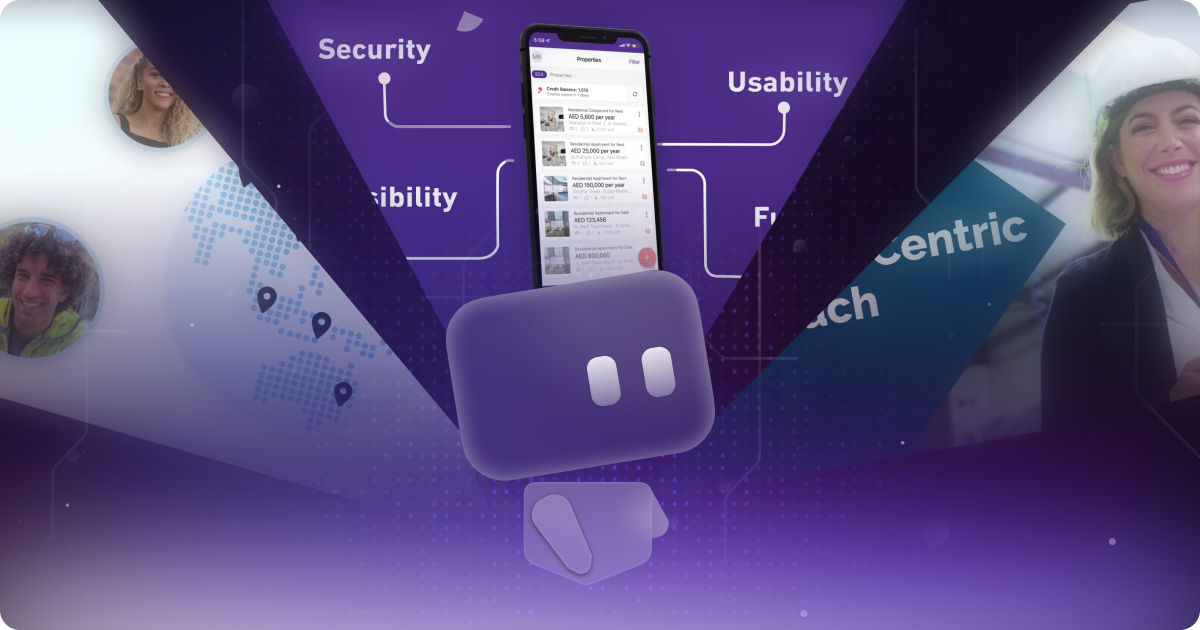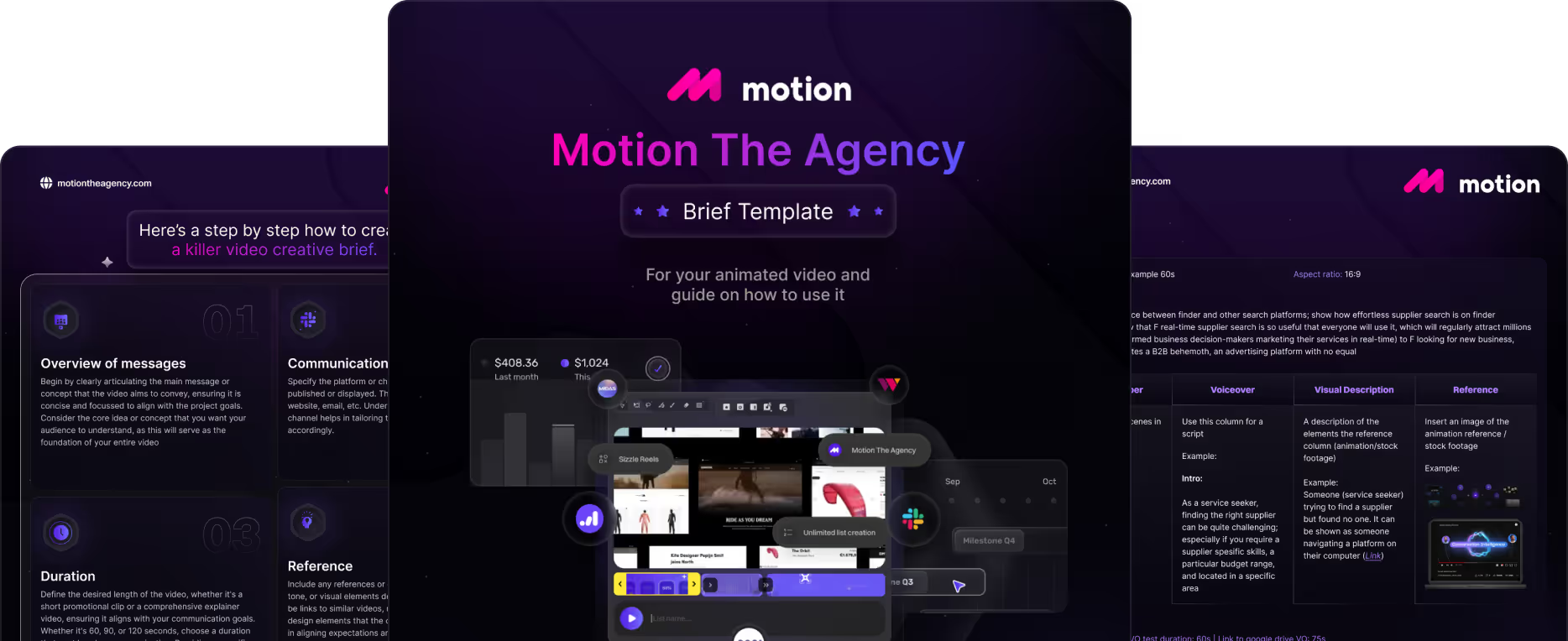Training Videos Explained: Types, Benefits, and How to Make One That Works


table of content
Key takeaways
- Training videos aren’t just for employees. They’re just as useful for clients and partners who need to understand your product or process.
- Different goals need different types of videos. Marketing, internal, and partner training videos each serve unique purposes — from customer education to team alignment.
- Short and focused always wins. The sweet spot for training videos is between 3–6 minutes, long enough to teach but short enough to keep attention.
- ROI goes beyond views. Track performance, retention, and time saved to see the real value of your training videos.
- Scalability is the hidden gem. Once created, a single video can train hundreds of people across teams and time zones with zero extra effort.
If you’re reading this, chances are you or your company are looking for more information on training videos or, more specifically, an agency that can create them for you. Well, you’ve come to the right place! We’re Motion The Agency, a motion design-forward agency where animated videos are our bread and butter. Training videos are one of our specialties, and with all the experience we have creating them, we know exactly what makes a great training video.
So, what is a training video, you ask? In short, it’s a video that helps your audience learn how to do something, whether it’s using a product, completing a task, or understanding a process. But it’s important to mention that not all training videos are for internal use. Some are actually made for clients, to help them understand and use your product more effectively.
Now, you’re probably wondering, “Does this actually work?” We get that question a lot. We actually covered it in more detail in our blog “Motion’s Guide to Training Video Production,” where we talk about how animated training videos are the most cost-effective in the long run and actually help with information retention. So, does it work? Well, it depends on the video. But if it’s one of our videos, we’re confident it’s going to work!
Types of training video
In the Motion’s guide we actually talked about 7 different type of training videos based on the animation or life action types. In this blog we will divide it based on the targeted audiences. Not all training videos are the same. Some focus on teaching employees how to do their job, while others may address customers, such as tutorials on how to use a product. In this section we will talk about a few of them:
Marketing training video
This is definitely something you’ve probably experienced, especially if you’ve ever used a complex product that isn’t exactly straightforward. Marketing training videos are all about making the customer experience smoother by showing how the product works. They explain the features, benefits, and how to use it in a way that’s easy to understand and engaging. These videos can take many forms — from step-by-step guides to product demos or even navigation tutorials. The main goal is to help customers get the most out of what the product offers.
Take the example above, for instance. It’s a step-by-step training video by Apple, teaching users how to connect their AirPods to a non-Apple device. For some users, this can be confusing, especially if it’s not something they do often. That’s where marketing training videos come in. They aren’t just about showing how things work — they’re also about educating customers on how the product or service fits into their lives. By addressing common questions or concerns, these videos build customer confidence and reduce the need for support. Sometimes what seems like common sense to some may not be obvious to others, just like in the video above. That’s why the need for marketing training videos has grown so much.
Internal training videos
Internal Training Videos are all about helping employees learn their job and understand company policies, tools, and procedures. These videos usually cover things like compliance, software training, or company culture. Once created, they’re typically stored on a Learning Management System (LMS), which is basically a place where all the training content is kept. Employees can watch the videos whenever they need to, track their progress, and even take quizzes. The best part about an LMS is that it keeps everything organized, making it easy for companies to deliver consistent training — whether it’s for new hires or ongoing learning. It gives employees the flexibility to learn at their own pace, no matter where they are.
Onboarding videos, like the one above, are also a key part of training. They go beyond just explaining how the company works; they help new hires understand the company culture, the values, and what’s expected from them. It’s an easy way to introduce new employees to the team and get them aligned with the company’s mission from day one.
Partner training videos
This type of video is a bit of a mix between marketing and internal training videos. It’s not as broad as a marketing video aimed at a large audience, but it’s also not focused on teaching employees how a company operates like internal training videos. Partner training videos are specifically targeted toward business partners or "clients" that a company will work closely with. These videos are designed to educate external stakeholders, such as suppliers, distributors, or resellers, on how to use a product, follow company processes, or understand partnership expectations. The goal is to ensure these business partners are on the same page as the internal team, which helps create smoother collaboration and more efficient workflows.
For example, we worked on a partner training video for Obrizum, aimed at their clients and partners. This video helps them understand how to use the platform and what features are available once they start their partnership with Obrizum. Partner training videos can cover a wide range of topics, from product demos and technical training to sales processes and compliance. In the case of the Obrizum video, it showcased the platform's features and demonstrated how to work with their servers effectively.
Why use training videos?
Training videos are a game-changer when it comes to retention. People tend to remember visuals better than text, which makes it easier for employees to learn and retain important information. The goal of any training program is to make sure employees can do their jobs well and grow within the company. Video, being a multimedia tool, appeals to both the visual and auditory senses, which is why it’s been so popular for distance learning — even since the days of televised education!
Plus, training videos are super scalable. They work for remote teams and businesses of all sizes. Whether you have a small team or a huge workforce spread out across different locations, videos allow you to deliver consistent training and make sure everyone is on the same page.
How to create a great training video: Industry best practices
When it comes to training videos, there’s no one-size-fits-all approach. It really depends on the topic. For heavier subjects, like security or safety training, your video might need to be a bit more detailed and longer than something for a lighter topic. It’s all about matching the video’s length and depth to the complexity of what you’re teaching.
If you want your training videos to really work for your employees and keep them engaged, here are some best practices to follow:
- Focus on One Thing at a Time: Keep it simple. Don’t try to teach too many things at once. It helps your audience really get the message without feeling overwhelmed.
- Use Simple Graphics: Stick to clean and simple visuals. No need for flashy graphics that might distract from the main point.
- Allow Access on Multiple Devices: Make sure your videos work on phones, tablets, and desktops. That way, your team can learn wherever they are.
- Keep It Short: No one wants to sit through a long video. Get to the point and keep it engaging, but don’t drag it out.
- Narrative/Human-Driven Content Is More Effective: People connect with stories. Adding a bit of personality or storytelling to your video makes it more relatable and memorable.
For us, in any of our training video projects, we focus on making sure the information our clients want to deliver is as accessible as possible. The tips above are not just ways for us to get the job done, but also to keep the target audience invested and engaged throughout the process.
Training video and ROI tracking
Okay, here’s another thing that comes up a lot during our research on training videos: How do you know whether they are effective or worth the investment? Unlike marketing-focused videos, training videos have completely different goals, which makes it harder to measure whether they are actually working, especially when the training videos are aimed at internal teams or partners.
Companies can evaluate the ROI of training videos by looking at factors beyond traditional engagement metrics:
- Track Performance Improvement: After employees watch your training videos, check if their performance improves. Are they completing tasks faster, making fewer mistakes, or hitting their goals more easily? This shows if the training is actually helping them do their job better.
- Assess Retention Rates: Just because someone watches a video doesn’t mean they remember everything. You want to know how much information they’ve retained. You can track this by giving them a quiz or follow-up test to see how much they actually remember and can apply.
- Calculate Cost Savings: One of the great things about training videos is that they can save companies a lot of money compared to in-person sessions. By cutting out the need for trainers, venues, and travel, companies can save big. It’s worth calculating how much money is being saved by using video training instead of traditional methods.
- Measure Knowledge Retention: A few weeks after the training, check in and see if employees can still recall what they learned. Are they still using the knowledge from the video? This helps measure whether the training had a lasting impact or if the information was forgotten quickly.
By tracking these factors, you get a better sense of how effective your training videos are and how much value they bring to the business, beyond just the number of views.
Can Motion the Agency create training video?
At Motion The Agency, we specialize in creating high-quality training videos, not just for internal use but also tailored for clients. We have extensive experience in this field and are experts in using animation to simplify complex concepts, making them easy to understand and digest.
For example, we produced over 100 L&D training videos for Obrizum, ranging from simple "how-to" tutorials on using their platform to more complex videos designed specifically for their clients. We excel at turning intricate ideas into clear, engaging animations that enhance learning. Our expertise also extends to creating marketing-style training videos for Reeledge, helping them convey key messages in a visually captivating way. Additionally, we crafted short how-to training videos for Diamond Swap, ensuring concise and effective learning experiences.
With our proven track record and deep experience, we’re masters at creating training videos that not only deliver valuable content but do so in a way that’s easy to absorb and enjoyable. if you are interested in working with us for your next training video project, feel free to check out our training video service page for more information!
Conclusion
In a way training video is not only videos that is for companies needs, there are other training videos that are has different purposes training videos are a powerful tool for both internal learning and customer education. Whether you're looking to improve employee performance, enhance customer understanding, or ensure seamless partner collaboration, training videos provide an effective and scalable solution.
At Motion The Agency, we specialize in creating high-quality training videos that simplify complex concepts, making them accessible to all audiences with the use of animations. With extensive experience in producing L&D, marketing, and partner training videos for clients like Obrizum, Reeledge, and Diamond Swap, we know exactly what it takes to make training content that works.
If you’re looking for a trusted partner to help you create training videos that deliver lasting results, we’re here to help. feel free to book a call with us and let’s discuss you next project!
FAQ



Contact Us
Ready to elevate your brand? Contact us for your
Free Custom Video Sample














